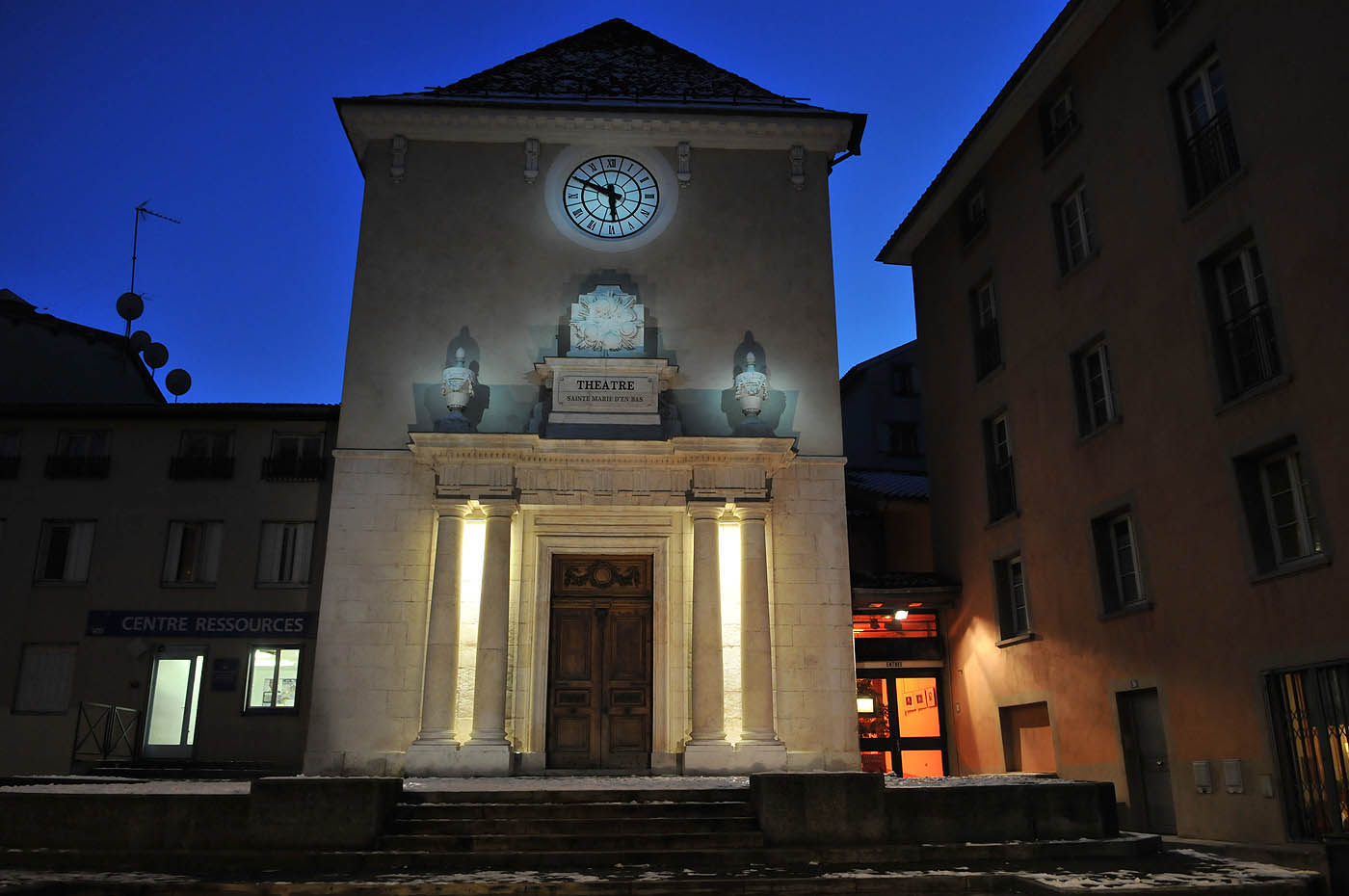
Sainte-Marie d'en Bas chapel
The chapel was built on Mother Chantal's initiative who wished for a second convent, in the city, as the first one (Sainte-Marie d'en Haut) was deemed too difficult to get to.
As early as 1638, she obtained the consent of the bishop, the consuls and the parliament for this foundation.
However, it was not until 1647 that the convent of Sainte Marie d'en Bas was officially founded and moved into a house in the Très Cloîtres district.
Between 1652 and 1659, the Visitandines acquired several other neighbouring houses.
In 1675, at the behest of the bishop of Grenoble Le Camus, they had a large main building with a mansard roof, a cloister gallery and a grand staircase with stone balusters built.
The convent chapel remained a temporary building for a long time, in a very poor state of repair in the second half of the 18th century.
In 1783, the Visitandines had a new church built, blessed on 23 February 1786, with an original plan.
The nuns' choir was built in the axial extension of the chapel, behind the high altar. This is a unique arrangement in France in the Visitation convents, but more common in Italy. It required the installation of a double-sided high altar, one facing the nave, the other the choir.
The remarkable interior decoration of the chapel makes it one of the most elegant buildings of the Louis XVI period in France.
The nave is punctuated by an order of molasse stone pilasters framing large blind arches.
The Ionic capitals are linked by a garland of laurel leaves. A beautiful frieze with two interlaced garlands runs around the chapel.
The ogives of the vault are designed as "bundles of rods tied with ribbons".
The high altar, made of different coloured marble, was very rich.
Like all the interior furniture, it disappeared at the beginning of the Revolution.
Above the choir were the servants' rooms, the flats for the retiring ladies, the room for the ornaments, the economy and the archive room.
The façade of the chapel, well preserved, still has its beautiful portal surrounded by twin Doric columns, with its fire pots and its "tomb-like" attic surmounted by a glory with the Sacred Heart of Jesus.
In 1792, the nuns were expelled and the convent was used as an arsenal and clothing shop for the army.
In 1903, the convent buildings were destroyed.
Only the chapel remained, and in 1906 it became the home of the first Musée dauphinois.
This museum was transferred in 1968 to the former convent of Sainte Marie d'en Haut.
à savoir avant votre visite
The chapel houses the Theater of Sainte-Marie d'en Bas.
En pratique
Thème
- Religious heritage,
- Chapel
Horaires
Du 01/01/24 au 31/12/24
-
Lundi :
Ouvert
-
Mardi :
Ouvert
-
Mercredi :
Ouvert
-
Jeudi :
Ouvert
-
Vendredi :
Ouvert
-
Samedi :
Ouvert
-
Dimanche :
Ouvert
Tarifs
Free of charge.
Tips
The chapel houses the Theater of Sainte-Marie d'en Bas.
À voir aussi
Information mise à jour le 12/05/2023
par Office de Tourisme Grenoble Alpes







